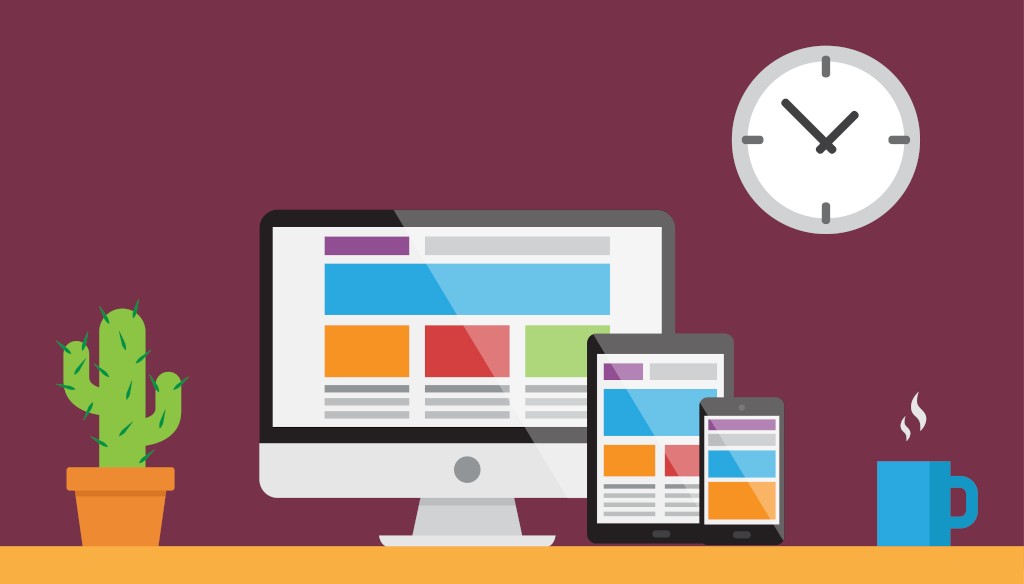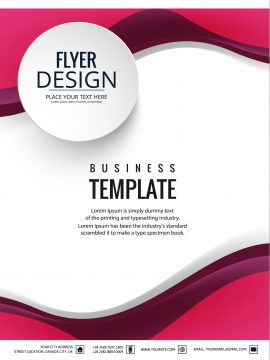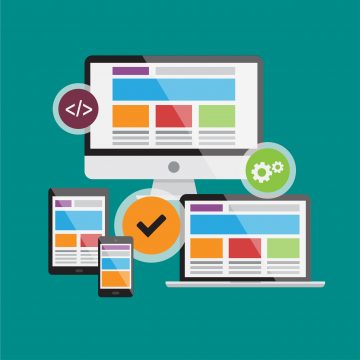02 Dec Print and Web Design: What Are the Key Differences?

A successful marketing campaign is the result of several key decisions made within the marketing team. If you are part of one, you already know that choosing which media to use can spell the difference between good and bad results for your business.
It’s not uncommon for print design and web design to be compared against each other. But they are two very different tools that when used in the right context, could bring excellent results to your business. The key to maximizing their benefits is to understand their key differences first.
Print and web design offer different sensory experiences to their audience
Consumers have preferences and you need to cater to whatever your target audience demands. While most people find reading online more convenient, others still prefer to read magazines because they like how paper feels in their hands.
Print and web design do a pretty good job in engaging the senses at the right context to give clients a good user experience. Print design gives you the opportunity to play with color, smell and texture to convey your message to your audience. Web design, on the other hand, engages the eyes and ears through imagery, audio, video and animated content.
A book and e-book is the perfect example of this contrast. Reading a book offers that sensorial experience of being able to feel the pages, touch the embossed text and even smell the paper. An e-book, on the other hand, offers a more interactive experience where a reader can enjoy animated illustrations, clickable links and sharing options.
Print and web design have different goals for consumers

Abstract business flyer wave design
Business cards, posters and flyers—some of the most effective print materials today only utilize a single page to capture the interest of consumers without taking away too much of their time. When you design for print, you only have that limited space to put all the crucial elements that will generate interest and offer information about a brand. In essence, you are focusing on the time spent by the consumer on that single page.
On the other hand, web design is different in the sense that you are not only designing for a single page but an entire website. In search engine optimization, it is crucial to design a page in such a way that visitors are led to explore other pages of the website, rather than leaving after viewing a single page. This will add to the site’s credibility and help it rank higher on search engines.
Print and web design follow different rules for content creation
Still in line with user experience, creating content is different for print and web design. Print designs are generally measured in centimetres or inches while web designs are measured in pixels. With print, you only have the chance to edit content while the material is being designed.
Once it is printed, your material becomes static. This is why it is very important to make sure that every element of the material is designed and checked properly before printing or you could risk losing money over erroneous materials.
Web design, on the other hand, gives you the opportunity to make adjustments as you go along. In fact, you always need to improve your website to adapt to advancements in technology.
For instance, standard web content is usually 7 PPI (pixels per inch), but these days, newer computers and mobile devices can already accommodate higher graphic resolutions.
In web design, it is highly important to strike the balance between functionality and aesthetics to accommodate a bigger audience, and you need to constantly make changes to your design if you want to achieve that.
Web design offers more opportunities for engagement
 Although print is still highly efficient in generating interest about a brand, there is no denying that web design offers more opportunities to engage with consumers. When designing a website, you can add links, videos, animations and other media that will allow for people to engage with your content and interact with your brand.
Although print is still highly efficient in generating interest about a brand, there is no denying that web design offers more opportunities to engage with consumers. When designing a website, you can add links, videos, animations and other media that will allow for people to engage with your content and interact with your brand.
Print, unfortunately, does not offer these conveniences, but it can be a strong medium in boosting your website’s traffic by putting your web address and social media handles on your business cards and other print materials so they get more exposure.
Print design offers a more consistent experience
While web design has the advantage of being flexible enough to allow for constant changes, print has the upper hand when it comes to giving consumers a more consistent experience.
Since websites are viewed on different devices, browsers, plugins and operating systems, it is almost impossible to ensure consistency in the experience of consumers.
This is where print gets the upper hand because you only need to focus on one design and it will be what everyone gets. You know that you are going to send the same message to your audience and they will all experience the same engagement through your printed material. This is one of the reasons print continues to be a powerful marketing tool until today.
Print tends to capture attention more than web design
Web content is designed for quick consumption. This is because reading online could be taxing to the brain and online users have far less patience than those who read printed materials. In fact, some studies have revealed that people who read electronic formats easily get tired over those who read print products.
The Bottom line
The differences between print and web design may be clear, but so are their similarities, especially in the goal of not only getting the interest of a bigger market but also in engaging consumers in a way that builds stronger relationships.
As an entrepreneur, you can use both methods in ensuring that you get the most out of your marketing campaigns. You just need the right people to work with and the right strategies to work on, and you will surely enjoy the many benefits of both print design and web design.
Resources:

No Comments